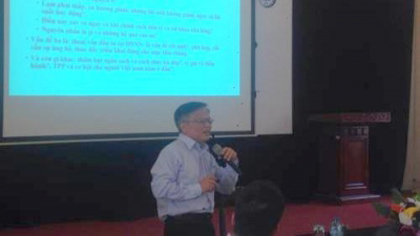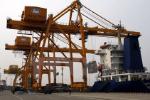Seminar highlights economic recovery in third quarter
As part of the Restructuring for a more Competitive Vietnam (RCV) Project, the Central Institute for Economic Management (CIEM) under the Ministry of Planning and Investment organised a seminar on the institute’s macroeconomic report in the third quarter in Hanoi on October 23.
 |
| CIEM President, Dr. Nguyen Dinh Cung speaks at the seminar. (Credit: bnews.vn) |
At the seminar, Vice Director of the CIEM’s Macroeconomy Department, Nguyen Anh Duong, briefed the group on the main points of the report in terms of growth, construction, industry, inflation, credit, the exchange rate, foreign direct investment (FDI), imports and exports.
The report stated positive results: the economy has seen significant recovery in both investment and consumption expenditure, a sharp increase in industry and construction, low inflation, stable interest rates, and rising FDI.
However, the credit growth has slowed down compared to the two previous quarters and exports grew more slowly than the third quarter despite an increased export volume.
According to CIEM President, Dr. Nguyen Dinh Cung, Vietnam’s economic growth in the third quarter was much higher than expected, with 6.8% gross domestic product (GDP) growth, and was forecast to be higher in the next quarter.
Cung raised questions as to whether the growth is sustainable, what leads to such a growth, and whether it was thanks to raised productivity, improved capacity in utilising resources or enhanced competitiveness.
Many delegates assumed that the economic growth was thanks to exploitation of natural resources and foreign enterprises. They suggested relevant agencies continue facilitating the business environment, improving competitiveness, prioritising commercial banks’ restructuring and focusing on prosecuting bad debts.
A representative from the RCV said that the current consumption rate in Vietnam is quite high, thus limitations and sources for the expenses should be considered.
In addition, Vietnam’s growth was actually lower than other successful regional countries, thus the growth’s reasons should be addressed and the role of State-owned and private sectors should be clarified for continuous growth.
(Source: nhandan.org.vn)
.
 về đầu trang
về đầu trang







